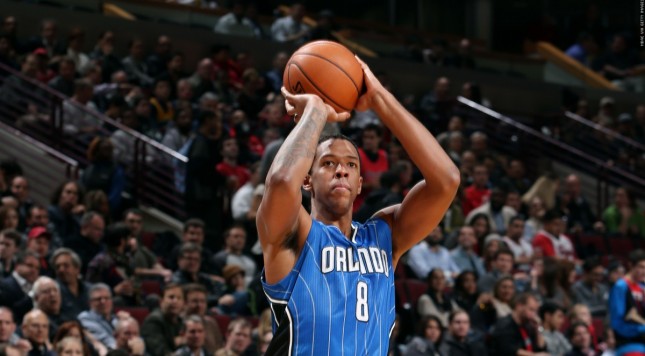No, the Cleveland Cavaliers didn’t unload Kevin Love. They didn’t seek an overhaul before the 2016 NBA trade deadline.
They didn’t need to.
Any substantial moves would have sent the message that the current roster wasn’t really trusted. What might have made a layered Love deal even worse for the Cavs: It could have created the idea that a coaching change wasn’t necessarily the fundamental act at the heart of the attempt to catch up to the Golden State Warriors, the team which dismantled Cleveland by 34 points on January 18.
The Cavaliers and general manager David Griffin had to tweak something on the margins of the roster, as opposed to removing a central and high-priced piece from the lineup. Kevin Love, after all, wasn’t able to perform for this team in the 2015 NBA Finals. It’s only right that with Tyronn Lue having displaced David Blatt as head coach — emphasising a faster pace and a more offense-first approach — Love should stick around in pursuit of a highly redeeming moment for himself and his employer.
Keeping Love around, however, didn’t mean Cleveland should have stood pat before the deadline.
The Beatles, in this case, were wrong: Love isn’t all you need.
Griffin, to his credit, realized this.
*
In the 2015 NBA Playoffs — very much including the Finals — the Cleveland Cavaliers achieved what they achieved at the defensive end of the floor. On occasion, their offense sprang to life, but with Love and Kyrie Irving sidelined by injury for most of the postseason, Cleveland had to rely on defense to come within two wins of the NBA title. Love and Irving were supposed to make the Cavs into a death-machine-level offensive juggernaut; without them, David Blatt and LeBron James recognized the need to make defense the cornerstone of what the team did.
Iman Shumpert locked down Kyle Korver in the Eastern Conference Finals against the Atlanta Hawks. J.R. Smith made himself into a useful (non-liability) defensive presence. In the Finals, the all-world floor-burn game of Matthew Dellavedova clearly bothered the Golden State Warriors through three games. Tristan Thompson’s boardwork and Timofey Mozgov’s rim protection made it hard for Golden State to score; moreover, Cleveland’s size made it hard if not impossible for Andrew Bogut to remain on the floor in the series.
In Game 4, of course, Golden State went to its smaller lineups and cast Bogut to the side. Andre Iguodala played the three games that turned him into a Finals MVP. Golden State, unshackled, not only won its first NBA championship in 40 years; it attained a whole new level of belief in small ball and the importance of spreading the floor for its shooters.
Eight months later, the Warriors are the ascendant team in the league, the standard by which all other clubs are measured. The relatively quiet trade deadline was a manifestation of the league’s awareness that a short-term rental won’t change the power structure relative to the Warriors. Other top teams didn’t need to seek a risky and perhaps destabilizing move. Cleveland pursued a tweak, and Channing Frye became David Griffin’s answer.
The new shape and structure of the Cavs is striking, relative to the defense-first team which pushed Golden State last June in the Finals.
Assuming Love and Irving are part of the mix, Cleveland already possessed a more offense-first inclination. With Frye in the mix, however, there can be no (more) doubt about the Cavs’ intentions relative to the coming playoffs and especially the Finals: Their best defense will be their offense. They will try to score to the extent that a merely average defensive performance — not great, but far better than the Sacramento Kings — will be enough to win.
It’s a fascinating plot twist, isn’t it? When the LeBron-Love-Kyrie triumvirate was initially assembled, Cleveland was supposed to be the team which was built to win 120-115 games. That team never really materialized. It morphed into a flinty defensive force, and under Blatt, it didn’t have much trouble maintaining its unquestioned place as the best team in the East in the first half of this season.
Now, however, the Cavaliers have come full-circle with Frye and his three-point shooting as a stretch four, which can spread the court and give LeBron (with his declining jump shot) a lot more chances to make forays to the rim. Cleveland is once again in ownership of a roster that’s built to win with offense, in the hope of forcing Golden State to be near-perfect on offense to win.
That first manifestation of the high-octane Cavs, in the autumn of 2014, didn’t become all that it was meant to be. If Channing Frye helps this second iteration of the Cavs to become a 120-point-a-night machine — very much including the Finals — this little tweak on the part of David Griffin will instantly become one of the most famous and remembered transactions in Cleveland sports history.

